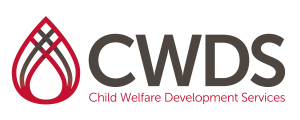CWDS Curriculum
Effects of Abuse and Neglect on Child Development: Infants and Toddlers eLearning
Level: Advanced Practice – Lineworker, Supervisor
Credits: 1
Intended Audience: New and experienced lineworkers and supervisors
Intended Objectives:
- Understand the child’s developmental level in the context of family, culture, and language
- Identify the effects of abuse and neglect on an infant/toddler’s social, physical, emotional, and cognitive development
- Differentiate between a normally-developed infant/toddler from an abused/neglected infant/toddler presenting with developmental delays
- Identify strategies that can assist caregivers in promoting the healthy development of abused and neglected children
- Value the evidenced-based and empirically supported interventions suitable for caregivers of infants and toddlers exposed to abuse and trauma
- Integrate what you have learned into a developmental and trauma-informed case plan for the child and family
Topics Include:
- Brief review of normal infant and toddler development
- Effects of abuse on development: internal and external factors
- Effects of abuse on domains of development
- Developmental and trauma-informed practice implications for CWS
- Trauma-Informed Assessment and Treatment Implications
CalSWEC Competencies Addressed:
1.6 Student understands the influence and value of traditional, culturally-based childrearing practices and uses this knowledge in working with families.
3.1 Student is able to practice basic principals and techniques of interviewing children and families for purposed of assessment, intervention, and service planning.
3.5 Student demonstrates an understanding of basic child development and how developmental level affects a child’s perception of events, coping strategies, and physical and psychological responses to stress and trauma.
3.10 Student understands how attachment, separation, and placement affect a child and family and how these experiences may influence a child’s physical, cognitive, social and emotional development.
4.3 Student works collaboratively with biological families, foster families, and kin networks, involving them in assessment and planning and helping them access services and develop coping strategies.
5.1 Student demonstrates understanding of child and youth development, including physical, cognitive, social, and emotional components, and can recognize developmental indicators of abuse or neglect.
6.2 Student can apply theories of human development and attachment in creating and managing effective case plans with clients.
Posted In:eLearning



